Sterba’s corydoras - Corydoras sterbai
Scientific name: Corydoras sterbai
Common name: Sterba’s corydoras
Family: Callichthyidae
Usual size in fish tanks: 5 - 7 cm (1.97 - 2.76 inch)
014
Recommended pH range: 6.2 - 7.8
Recommended water hardness: 4 - 12°N (71.43 - 214.29ppm)
0°C 32°F30°C 86°F
Recommended temperature range: 23 - 26 °C (73.4 - 78.8°F)
The way how these fish reproduce: Spawning
Where the species comes from: South America
Temperament to its own species: peaceful
Temperament toward other fish species: peaceful
Usual place in the tank: Bottom levels
Origin
Sterbai Corydoras come from South America, where they are commonly found in shallow waters and tributaries in Brazil and Bolivia.
Lifespan
With proper care, Sterbai Corydoras can live for 3 to 4 years.
General care
Most Sterbai Corydoras available for purchase today are tank-bred, making them more adaptable to varying water conditions compared to their wild counterparts. These fish typically grow to about 6.3 cm (2.5 inches) in size. They thrive in a well-planted aquarium, but if using gravel as a substrate, ensure it is smooth to prevent injury to their barbels. Unlike some other Corydoras species, Sterbai Corydoras prefer slightly warmer water temperatures. They require high water quality, so regular water changes and a good filtration system are essential. It’s also beneficial to provide them with plenty of hiding spots and a soft substrate, as this mimics their natural habitat and helps reduce stress.
Food and feeding
When feeding Sterbai Corydoras, avoid using general fish foods that may not reach the bottom where these fish feed. Instead, offer sinking pellets or tablets designed for bottom feeders. They also enjoy vegetable-based foods like spirulina pellets, as well as meaty options such as bloodworms or brine shrimp. Since they are more active in the evening, it's best to feed them at this time, ensuring they get their share before other fish consume most of the food.
Sexing
The simplest way to differentiate between male and female Corydoras is to look from above. Females have a rounder, fuller body shape, especially when carrying eggs, and are generally slightly larger than males.
Breeding
Breeding Sterbai Corydoras is relatively straightforward. Aim for a pH level of approximately 6.8 to 7.0 and ensure the carbonate hardness (KH) is at least 4 to support the survival of the fry. These fish prefer heavily planted tanks, which increases the likelihood of successful spawning and fry survival. The eggs are transparent, and the fry hatch within 3 to 4 days. Protect the eggs from snails and other fish that might consume them. Once the fry are free-swimming, they can be fed algae and finely crushed food. Avoid using a filter during breeding to prevent the newborns from being sucked in and potentially harmed.
Pictures
We thank Aaron Gatt Floridia for providing some of the pictures. The remaining images were purchased from jjphoto.dk.

















 Aspidoras
Aspidoras  Giant
Giant  Hognosed
Hognosed  Emerald
Emerald  Cascarudo
Cascarudo  Acre
Acre  Adolfo’s
Adolfo’s  Bronze
Bronze 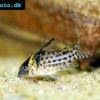 Agassizii’s
Agassizii’s  Spotted
Spotted  Skunk
Skunk  Corydoras
Corydoras 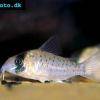 Fairy
Fairy  Corydoras
Corydoras  Pink
Pink 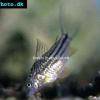 San
San  Bond’s
Bond’s  Spotted
Spotted  Tailspot
Tailspot  Concolor
Concolor  Cope’s
Cope’s 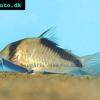 Sand’s
Sand’s  False
False  False
False 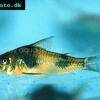 Ehrhardt’s
Ehrhardt’s  Elegant
Elegant 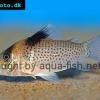 Saddle
Saddle  Fowler’s
Fowler’s  Gomezi
Gomezi 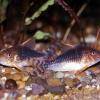 Palespotted
Palespotted 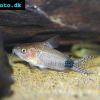 Guapore
Guapore  Dainty
Dainty  Mosaic
Mosaic  Imitator
Imitator  Julii
Julii  Leopard
Leopard 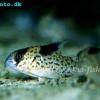 Black
Black  Slant-bar
Slant-bar  Bluespotted
Bluespotted  False
False  Bandit
Bandit  Mini
Mini 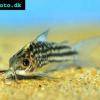 Napo
Napo  Corydoras
Corydoras 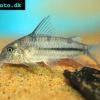 Blue
Blue  Nijssen’s
Nijssen’s 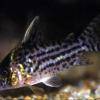 Ornate
Ornate  Peppered
Peppered  Panda
Panda  Albertini
Albertini  Pastaza
Pastaza  Corydoras
Corydoras  Many-spotted
Many-spotted  Pretty
Pretty  Dwarf
Dwarf  Iridescent
Iridescent  Reticulated
Reticulated 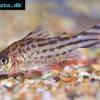 Bannertail
Bannertail  Robust
Robust  Schwartz’s
Schwartz’s  Black
Black 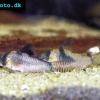 Longnosed
Longnosed  Seuss’
Seuss’  Smudge
Smudge  Masquerade
Masquerade 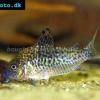 False
False  Millenium
Millenium  Pinkthroat
Pinkthroat  Longsnout
Longsnout  False
False  Miguelito
Miguelito 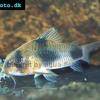 Twosaddle
Twosaddle  Xingu
Xingu 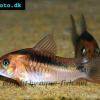 Black
Black  Porthole
Porthole  Flagtail
Flagtail  Brown
Brown  Spotted
Spotted